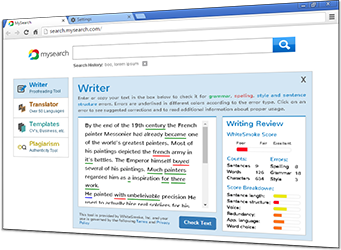Quotation Marks – Style Conventions
As our brief article will show, those tiny 6s and 9s – the quotation marks – turn out to have quite a few usages in addition to just indicating quotation. It is important for good writers to be able to make use of the wide range of quotation mark usage, as it is the small details that give your writing the final polishing touches.
Quotation marks – style conventions
1. Quotation marks only appear in pairs, so do not forget to add the closing quotation marks where needed.
2. In most computer fonts, opening quotation marks look like tiny 6s ( “ ) and the closing quotation marks like tiny 9s ( ”). Make sure you are consistent with these forms. Regular typewriters usually have regular quotation marks which are also acceptable ( "__ "). The same applies for single quotation marks.
3. American English uses double quotation marks for all the uses reviewed in this article, except for quotes within quotes, expressed by single quotation marks. British English typically does the opposite, starting with single quotation marks and setting off internal quotes with double quotation marks. Canadian English uses both styles.
4. If double and single quotation marks happen to touch each other, separate them with one space.
My uncle, who was very critical of the government, would always say, "Don't believe any word they tell you about government 'reforms ' " and continued with his theories of political corruption.
5. If you need to set off a quote within a quote within a quote, you need to go from double to single to double quotation marks. Nevertheless, most writing guides call for refraining from such "recursive" quoting and rephrase the sentence in such a way that would call for no more than two-level quoting.
6. Refrain from using a single quotation mark with an apostrophe. If the need for this arises, rephrase your sentence. ”
No: “…quote ‘a man’s world’ quote...”
7. There is a difference between dialog and non-dialog text when it comes to combining other punctuation marks with quotation marks. When you use quotation marks in dialog, all the other punctuation marks should be placed within the quotations. When you write non-dialog text, there are some variations.
"I want to be alone," said Greta.
[Comma]
Greta said, "I want to go."
[Period]
"Leave me alone!" Greta shouted.
[Exclamation mark]
"Why can't you just leave me alone?" asked Greta angrily.
[Question mark]
"Just go, leave me –” she continued.
[Dash]
8. In non-dialog text, put periods and commas inside the quotation marks. However, colons and semicolons always go outside the quotation marks, unless they are part of the original quote.
On yesterday's quiz, you could get either "very good," "good," or "pass."
[Comma and period before closing quotation marks]
I knew the teacher would say, "I am very pleased with the quiz results ": Nearly everybody got "very good”; however, some students did not even pass.
[Colon and semicolon after closing quotation marks]
9. Put dashes, question marks and exclamation points inside quotation marks only if they apply to the quoted part, and outside if they apply to the whole sentence.
I just love Madonna's song Who's that Girl?"
[Question marks apply only to quoted text]
Did you like Madonna's song "Vogue”?
[Question mark applies to whole sentence]
"You won't believe it! Madonna was on my flight to Paris!" Joy cried out loudly.
[Exclamation point applies only to quoted text]
If only I could remember all the words of "Vogue”!
[Exclamation point applies to whole sentence]
10. In British English, all punctuation marks go outside the quotation marks. Canadian English uses both American and British styles. Whatever style you choose, remember to be consistent in any given piece of writing.



